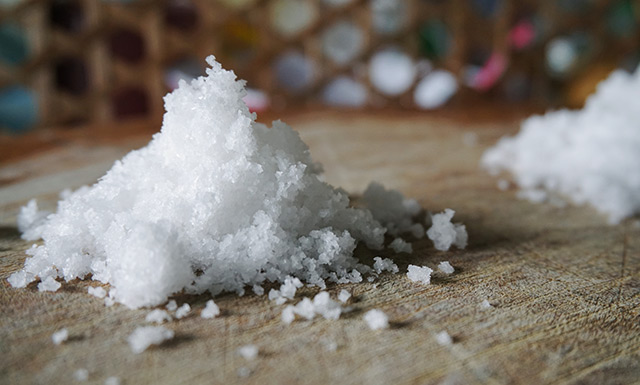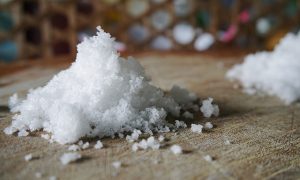
Potassium hydroxide sources, health risks
Saturday, October 07, 2017 by Frances Bloomfield
http://www.naturalpedia.com/potassium-hydroxide-sources-health-risks.html

Potassium hydroxide is a solid and colorless inorganic compound with a strong base. Also known as potassium hydrate or caustic potash, potassium hydroxide is created by reacting impure potassium with sodium hydroxide.
Its corrosive and reactive nature have made it popular to use in industrial applications that include acting as the electrolyte in alkaline batteries, serving as a pH regulator in industrial manufacturing and processing, and being utilized as a major component in vegetable oil-based biodiesels. In addition to these, potassium hydroxide has cosmetic and household applications too, and is even added to processed foods as a thickener and shelf life extender.

Harmful effects that can be caused by potassium hydroxide
The accidental ingestion of potassium hydroxide has serious health consequences that require immediate medical attention. These health consequences often include severe pain in the abdomen, throat, and mouth; burning sensations in the mouth, stomach, and throat; and a sudden drop in blood pressure, usually preceding shock. Collapse and hematemesis, or the vomiting of blood, can occur from acute potassium hydroxide ingestion.
Potassium hydroxide can be purchased in flake or pellet form. Both of these are considered poisonous. Combined with water, or moisture potassium hydroxide pellets and flakes can turn these fluids into caustic substances.
Workers who handle potassium hydroxide should exercise caution around it as it’s considered an occupational hazard due to it being a highly volatile and corrosive substance. Potassium hydroxide can severely burn the skin, eyes, and mucus membranes on direct contact. It can even lead to scarring with greater exposure, or dermatitis with repeated or prolonged contact; increased contact with the eyes can result in severe burns with the possibility of blindness. On the other hand, inhaling potassium hydroxide particulates or mist can severely irritate the nose, eyes, and throat. In the most severe cases, lung edema may occur.
The people who are most susceptible to the harmful effects of potassium hydroxide are those with pre-existing skin conditions, eye issues, and/or impaired respiratory function. Potassium hydroxide exposure can aggravate these problems, so these individuals are cautioned against handling this substance.
Body systems harmed by potassium hydroxide
According to The National Institute for Occupational Safety and Health (NIOSH), the body parts and systems most at risk from potassium hydroxide exposure are the eyes, skin, and respiratory system. Accidentally swallowing potassium hydroxide puts the digestive system at risk.
However, prolonged contact with potassium hydroxide dust or diluted potassium hydroxide solutions are known to have destructive effects on tissues of all kinds, so exercise extreme caution around this substance.
Where to learn more
- Avoid toxic ingredients and create your own mask with calcium bentonite clay
- California may legalize “liquid cremation” in bizarre attempt to fight global warming
- Gross food ingredients you didn’t know are in a hot dog
- It’s Renewable, It’s Eco-friendly – It’s Hemp
- Review: Terracycle Natural Drain Cleaner Uses Microbes, Not Chemicals
Summary
Potassium hydroxide is a dangerous and corrosive substance that can cause severe damage to the skin, eyes, digestive, and respiratory system with acute and prolonged exposure and contact. It can be highly destructive to all body tissues if the affected person is not given the appropriate medical attention, however.
Potassium hydroxide can irritate the lungs at small doses while higher concentrations can lead to lung damage. Vomiting, diarrhea, severe burns of the stomach, mouth, and throat, severe tissue scarring and even death can result from ingestion. Direct contact on the skin can bring about severe burns, scarring and dermatitis. Potassium hydroxide can lead to redness, swelling, and possible blindness when it comes into contact with the eyes.
Those with pre-existing conditions relating to any of the aforementioned affected organs are most at risk around potassium hydroxide and should therefore avoid it as much as possible.
Sources include:
Livestrong.com 1
Livestrong.com 2
PubChem.NCBI.NLM.NIH.gov
Atmos.UMD.edu
Tagged Under: Tags: Potassium hydroxide





